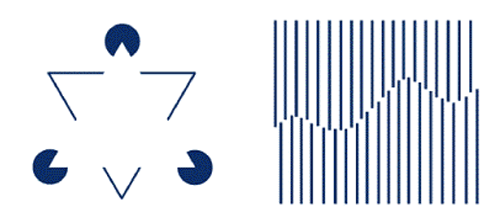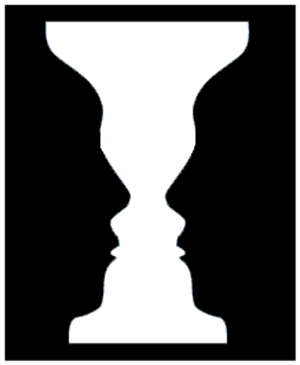|
Visual and optical illusions are very closely related. Both are common in normal perception and are natural consequences of the way our sensory systems work. Visual illusions oftenly occur when a person misperceives a physically present stimulus. When we are led to misperceive distances, we not only misjudge length and shape, but we also misjudge size.
take a look at a few examples...
|
Ponzo Illusion |
The two horizontal lines do not appear to be equal in length, but they are. The explanation for this illusion also involves depth perception. You interpret the oblique lines as indicating depth, which leads you to perceive the upper horizontal line as farther away than the bottom line. Although the images formed on your retinas by the two horizontal lines are actually equal in length, you perceive the upper line as longer because you think that it is farther away.
|
Illusory Contours
Look at the figure on the left. What do you see? Most likely, you perceive a white triangle overlaid on three blue circles and an outline triangle. But if you look at this figure carefully, you will see that each "side" of the white triangle is mostly white space. Similarly, in the figure on the right, you perceive a curvy line even though none actually exists. The edges you see in both examples are called illusory contours.

The most classic example of visual illusions are the reversable faces:
 |
Reversible figures are not true illusions, because no false perception occurs. They are figures that allow for more than one perceptual interpretation, each of which is accurate.You can interpret this in two ways: as a white vase against a black background or as two faces in profile against a white background.notice how difficult it is to see both images simultaneously. This difficulty arises because your perceptual system prefers to make only one interpretation at a time. |
| [ home| perception| depth perception| context effects| 3D vision ] |
| [ autostereogram| effects of color| optical illusions| visual illusions ] |


